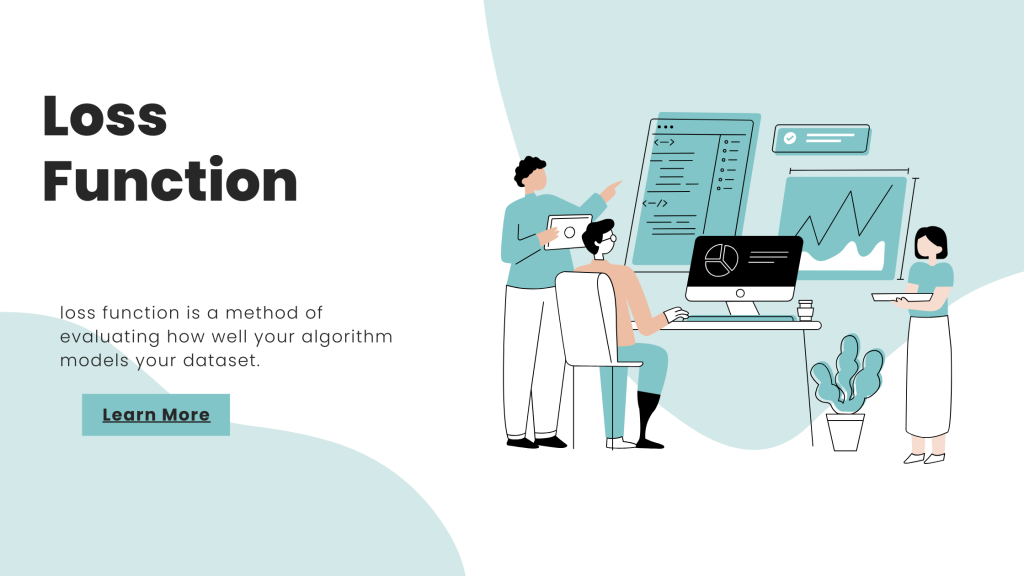
In the ever-evolving world of machine learning, loss function are the unsung heroes that power the learning process. These critical components are at the core of training algorithms and are fundamental to the success of any model. In this guest blog, we’ll delve into the concept of loss functions, exploring their significance, types, and their role in shaping the future of artificial intelligence.
Defining Loss Function
At its essence, a loss function, also known as a cost function or objective function, quantifies the difference between predicted values and actual ground truth. In simple terms, it measures how far off our machine learning model’s predictions are from the actual outcomes. The ultimate goal is to minimize this loss, making the model more accurate and robust.
The Importance of Loss Function
Loss functions are like guiding stars for machine learning models, steering them in the right direction during training. But why are they so vital?
- Optimization:
- Loss functions are the key to optimization. Machine learning models use them to adjust their internal parameters, minimizing the loss and improving predictions. This iterative process leads to increasingly accurate results.
- Applicability:
- Different problems require different loss functions. Whether you’re working on classification, regression, or other tasks, choosing the appropriate loss function is crucial for model performance.
- Generalization:
- A well-chosen loss function aids in the generalization of models. It prevents them from overfitting (memorizing the training data) and underfitting (failing to capture important patterns) by finding the right balance.
Types of Loss Functions
Machine learning provides a wide array of loss functions, each suited for different tasks. Let’s explore a few of the most common types:
- Mean Squared Error (MSE):
- Ideal for regression problems, MSE calculates the average squared difference between predicted and actual values. It penalizes large errors more heavily.
- Binary Cross-Entropy:
- Commonly used in binary classification tasks, it measures the dissimilarity between predicted and actual binary outcomes. This function is sensitive to even small discrepancies.
- Categorical Cross-Entropy:
- For multiclass classification problems, categorical cross-entropy is the go-to choice. It quantifies the differences between predicted class probabilities and true labels.
- Huber Loss:
- A hybrid of MSE and absolute error loss, Huber loss is less sensitive to outliers, making it suitable for regression when data contains noise.
- Hinge Loss:
- Often seen in support vector machines (SVMs) and used for classification problems, hinge loss pushes the model to classify data correctly. It is especially useful for linear classifiers.
- Custom Loss Functions:
- In many cases, custom loss functions are designed to meet specific model and problem requirements. These can be tailored to emphasize certain errors or ignore others, depending on the application.
The Balancing Act: Bias vs. Variance
A critical aspect of choosing a loss function is striking the right balance between bias and variance. Bias refers to how closely your model approximates the true data distribution, while variance deals with the model’s sensitivity to small changes in the training data.
Selecting the appropriate loss function helps manage this trade-off. For example, if you choose a loss function that penalizes outliers heavily, your model might become biased. On the other hand, if the loss function is too permissive, it could lead to high variance, causing the model to overfit.
Future Trends and Challenges
The world of machine learning is continuously evolving, and loss functions are no exception. Researchers are continually working on developing new loss functions that can address complex problems, encourage model interpretability, and facilitate the training of robust models. Exploring new loss functions is essential as machine learning is applied to increasingly diverse domains.
However, challenges remain, such as dealing with imbalanced datasets and defining loss functions that can handle structured data effectively. As machine learning and AI advance, the development of innovative loss functions will play a pivotal role in shaping the technology’s future.
Conclusion
Loss function are the unsung heroes of machine learning, guiding models toward better predictions and more accurate results. Understanding their role, the types available, and the importance of selecting the right one for your task is essential for any machine learning practitioner. As technology continues to progress, loss functions will remain a crucial component, ensuring that AI models evolve, learn, and adapt to meet the demands of an ever-changing world. So, remember, the next time you train a machine learning model, it’s the loss function that leads the way.





